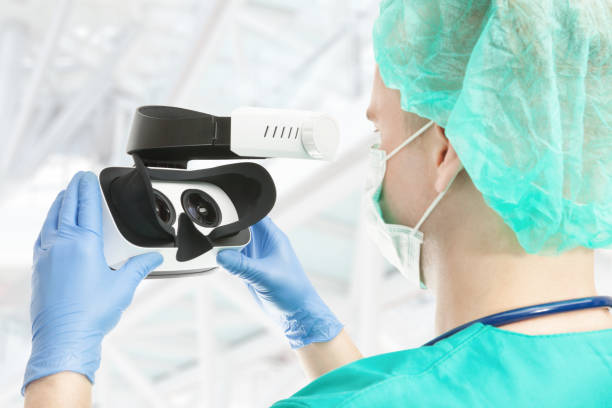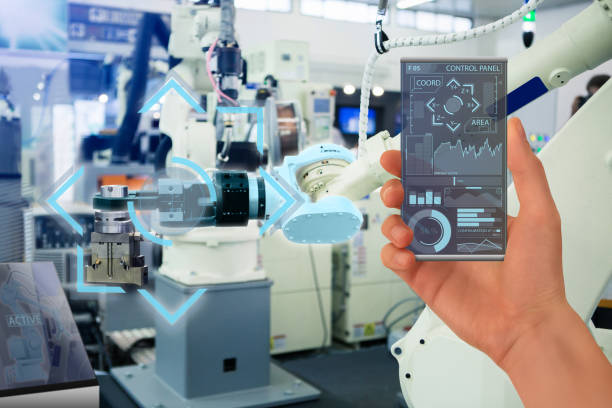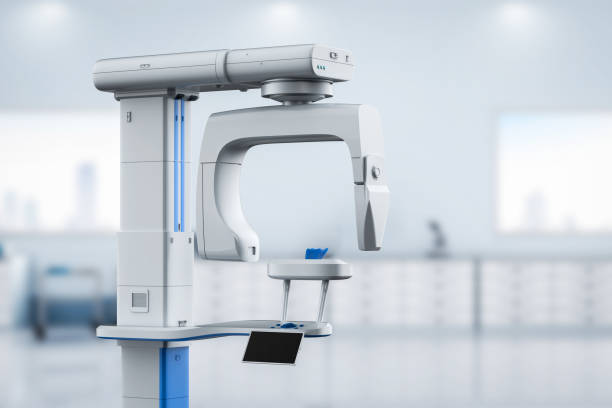The relentless pursuit of excellence in surgery has consistently driven innovation, leading to remarkable advancements in techniques and technologies. Among the most transformative developments in recent years is the emergence and rapid evolution of augmented reality (AR) within the operating room. By seamlessly blending the real world with computer-generated imagery, AR in surgery empowers surgeons with an unprecedented level of insight, precision, and control. This technology overlays critical information, three-dimensional anatomical models, and real-time data directly onto the surgeon’s field of view, effectively creating an “X-ray vision” capability and enhancing their decision-making and dexterity. This comprehensive article will delve deeper into the multifaceted applications of augmented reality in surgical procedures, exploring its intricate mechanisms, diverse benefits, inherent challenges, and the exciting trajectory it is charting for the future of surgical interventions.
Toc
- 1. Unveiling the Power of Augmented Reality: A Deeper Look at Its Principles in Surgery
- 2. Expanding the Horizon: Diverse Applications of Augmented Reality in Surgical Procedures
- 3. Related articles 01:
- 4. The Multifaceted Advantages of Implementing Augmented Reality in Surgical Procedures
- 5. Navigating the Challenges and Key Considerations for AR Adoption in Surgery
- 6. Related articles 02:
- 6.1. Achieving Seamless Integration with Existing Surgical Workflows
- 6.2. Addressing Regulatory Approval and Upholding Stringent Safety Concerns
- 6.3. Managing the Initial Investment Costs and Ensuring Broad Accessibility
- 6.4. Facilitating Comprehensive Surgeon Training and Fostering Widespread Adoption
- 7. Real-World Successes and the Exciting Future Trajectory of AR in Surgical Procedures
- 8. Conclusion: Augmented Reality – Pioneering a New Era of Surgical Excellence
Unveiling the Power of Augmented Reality: A Deeper Look at Its Principles in Surgery

Augmented reality (AR) transcends the limitations of traditional surgical visualization by digitally enhancing the surgeon’s perception of the patient’s anatomy and the surgical environment. Unlike its counterpart, virtual reality (VR), which immerses the user in a completely artificial digital world, AR strategically layers digital information onto the surgeon’s real-time view, creating a synergistic blend of the physical and virtual. This augmentation provides surgeons with critical insights without obscuring their direct line of sight to the surgical field, fostering a more intuitive and informed approach to complex procedures.
Deconstructing Augmented Reality (AR) Technology
The magic of AR in surgery hinges on a sophisticated interplay of hardware and software. Specialized AR headsets or displays, often resembling advanced goggles or integrated into surgical microscopes, serve as the primary interface, projecting high-resolution digital information directly onto the surgeon’s retina. These displays are often designed with features like intuitive gesture control and voice command recognition, allowing surgeons to interact with the digital overlays without disrupting their focus or sterility.
Crucially, precise tracking systems are essential for ensuring the accurate and stable alignment of these digital overlays with the patient’s unique anatomy. Various tracking technologies are employed, including optical tracking, which utilizes external cameras and markers placed on the patient and surgical instruments; electromagnetic tracking, which relies on magnetic fields to determine the position and orientation of instruments; and inertial measurement units (IMUs), which use sensors to track movement and orientation. Advanced computer vision algorithms also play a vital role in analyzing the real-world environment and registering the digital content accordingly.
The final critical component is the software and data integration framework. This involves specialized software platforms that can process and render complex medical imaging data, such as detailed three-dimensional models reconstructed from CT and MRI scans. These platforms also facilitate the integration of real-time data streams from surgical navigation systems, patient monitoring devices, and other intraoperative technologies, providing surgeons with a comprehensive and dynamic view of the surgical landscape.
Differentiating AR from Virtual Reality (VR) in the Surgical Domain
While both AR and VR represent powerful tools in the realm of medical technology, their primary applications within surgery differ significantly. Virtual reality (VR) excels in creating fully immersive simulated environments, making it an invaluable asset for surgical training and preoperative planning. Surgeons can practice complex procedures repeatedly in a risk-free virtual setting, refine their techniques, and gain a deeper understanding of the surgical anatomy before ever entering the operating room.
Augmented reality (AR), in contrast, is primarily deployed during live surgical interventions. Its strength lies in enhancing the surgeon’s real-time perception and providing immediate, context-specific information directly within the surgical field. While VR prepares the surgeon beforehand, AR acts as a continuous guide and information source during the critical moments of the operation.
Expanding the Horizon: Diverse Applications of Augmented Reality in Surgical Procedures

The adaptability and versatility of augmented reality have spurred its exploration and adoption across a wide spectrum of surgical specialties, offering innovative solutions to enhance various stages of the surgical journey, from initial planning to the final closure.
Revolutionizing Preoperative Planning and Visualization
AR has fundamentally transformed the landscape of preoperative planning. Surgeons can now leverage sophisticated software to generate highly detailed, patient-specific three-dimensional holographic models derived from their medical imaging data. These models can be manipulated, rotated, and even virtually dissected, allowing surgeons to meticulously plan their surgical approach, identify potential challenges, and precisely define critical steps before making the first incision. Surgeons can even perform virtual “walkthroughs” of the planned procedure, optimizing instrument trajectories and implant placement for maximum accuracy and efficiency. This enhanced spatial understanding and detailed visualization contribute to reduced surgical complexity and improved predictability of outcomes.
Empowering Intraoperative Guidance and Navigation
During the critical intraoperative phase, AR acts as an invaluable guide, providing surgeons with real-time navigational cues directly within their surgical field. By overlaying virtual pathways, anatomical landmarks, or target locations, AR functions as an advanced “surgical GPS,” assisting surgeons in accurately navigating complex anatomical terrains, precisely placing implants in orthopedic and dental procedures, and meticulously resecting tumors in oncology. This is particularly advantageous in minimally invasive surgeries, where the surgeon’s direct visualization is often limited to the narrow field of view provided by endoscopic cameras. AR guidance enhances the surgeon’s spatial awareness and reduces the risk of damaging surrounding healthy tissues.
Elevating Visualization of Intricate Anatomical Structures
AR offers a remarkable ability to enhance the surgeon’s visualization of subtle yet critical anatomical structures that might be difficult to discern with the naked eye during surgery. In delicate neurosurgical procedures, for instance, AR can overlay the precise location of intricate blood vessels, delicate nerve pathways, and eloquent brain regions, providing surgeons with a crucial “map” to navigate safely and avoid iatrogenic injury. Similarly, in oncological surgeries, AR can delineate the precise margins of tumors based on preoperative imaging, ensuring complete resection while preserving surrounding healthy tissue. Different visualization modes, such as transparency adjustments and color-coding of specific structures, further enhance the surgeon’s ability to differentiate and interact with complex anatomy.
Seamless Integration of Real-time Data Overlay and Monitoring
The power of AR extends beyond static anatomical visualization to encompass the dynamic integration of real-time data directly into the surgeon’s operative view. Vital patient parameters, such as heart rate, blood pressure, and oxygen saturation, can be continuously displayed, allowing the surgeon to monitor the patient’s physiological status without diverting their attention from the surgical field. Furthermore, data from surgical navigation systems, live imaging feeds (like intraoperative ultrasound or fluoroscopy), and even robotic surgery platforms can be seamlessly overlaid, providing the surgeon with a comprehensive and constantly updated information hub within their immediate visual focus. This real-time data integration enhances situational awareness, facilitates quicker and more informed decision-making, and ultimately contributes to improved patient safety.
Transforming Surgical Training and Education
AR is revolutionizing the landscape of surgical training and education by offering immersive and interactive learning experiences. Surgical trainees can practice complex procedures in a simulated environment where virtual guidance, anatomical information, and real-time feedback are overlaid onto their view of a physical mannequin or even a cadaver. This hands-on, augmented learning approach accelerates skill acquisition, improves procedural understanding, and allows trainees to gain confidence in a controlled setting before operating on real patients. Experienced surgeons can also utilize AR for remote mentoring, guiding colleagues through complex procedures in real-time, regardless of their physical location. Personalized learning paths can be tailored to individual trainee needs, optimizing the educational experience and ensuring a higher level of preparedness.
The Multifaceted Advantages of Implementing Augmented Reality in Surgical Procedures

The integration of augmented reality into the surgical workflow yields a multitude of compelling advantages that benefit not only the surgeons but also the patients and the broader healthcare system.
Empowering Surgeons with Enhanced Capabilities
Surgeons gain access to enhanced visualization of intricate anatomy, leading to improved precision in complex maneuvers. Real-time data overlay facilitates quicker and more informed decision-making, while the potential for more efficient and less invasive procedures can reduce surgical time and patient morbidity. The reduced cognitive load, thanks to readily available information within the surgical field, allows surgeons to focus their mental energy on the critical aspects of the procedure.
Delivering Improved Outcomes and Safety for Patients
Patients experience the tangible benefits of improved surgical accuracy, leading to reduced risks of complications and potentially fewer revision surgeries. The possibility of less invasive procedures translates to smaller incisions, less scarring, shorter hospital stays, and faster recovery times. The enhanced visualization and guidance provided by AR also contribute to increased patient safety during complex operations.
Driving Efficiency and Advancing Education within the Healthcare System
The healthcare system as a whole benefits from increased surgical efficiency, potentially leading to a higher throughput of patients. Reduced complications and shorter hospital stays translate to significant cost savings. Furthermore, the enhanced training capabilities offered by AR contribute to the development of more skilled and confident surgeons, ultimately elevating the overall quality of surgical care.

Despite its immense potential, the widespread and seamless adoption of AR in surgical procedures is not without its challenges and requires careful consideration of several key factors.
Overcoming Technological Limitations and Ensuring Accuracy
Ensuring the absolute accuracy, unwavering reliability, and seamless integration of AR technology within the high-stakes surgical environment remains a critical hurdle. Issues such as minimizing latency between real-world movements and digital overlays, achieving optimal display clarity and resolution, and ensuring the robustness and precision of tracking systems are paramount and require ongoing technological advancements.
2. https://cungcapthietbiyte.com/mmoga-telemedicine-technology-trends-shaping-the-future-of-healthcare
Achieving Seamless Integration with Existing Surgical Workflows
Integrating AR technology smoothly and intuitively into existing surgical workflows without causing disruption to established procedures or inadvertently increasing surgical time is a significant challenge. This requires meticulous planning, user-centered design principles, and close collaboration between technology developers and surgical teams to ensure a seamless and efficient integration process.
Addressing Regulatory Approval and Upholding Stringent Safety Concerns
As with any novel medical technology intended for use in critical surgical interventions, AR systems must undergo rigorous testing, meticulous evaluation, and stringent regulatory approval processes to ensure both their efficacy and the absolute safety of patients. Adherence to the highest safety standards and ongoing monitoring of device performance are essential for building trust and ensuring responsible implementation.
Managing the Initial Investment Costs and Ensuring Broad Accessibility
The initial investment associated with acquiring and implementing AR technology, including the specialized hardware (headsets, tracking systems), sophisticated software platforms, and necessary infrastructure upgrades, can be substantial, potentially posing a financial barrier for some healthcare institutions. Efforts focused on driving down costs, developing more affordable solutions, and exploring innovative financing models are crucial for making this transformative technology more broadly accessible to hospitals and surgical centers of all sizes.
Facilitating Comprehensive Surgeon Training and Fostering Widespread Adoption
Effective and comprehensive training programs are absolutely essential to ensure that surgeons can confidently, skillfully, and effectively utilize AR technology in their surgical practice. Overcoming the initial learning curve, addressing any potential resistance to adopting new technologies, and fostering widespread acceptance and enthusiasm among surgeons are critical for realizing the full potential of AR in surgery. This requires dedicated training resources, ongoing support, and opportunities for surgeons to share best practices and learn from each other’s experiences.
Real-World Successes and the Exciting Future Trajectory of AR in Surgical Procedures

Augmented reality is no longer confined to the realm of research laboratories; it is actively being implemented in leading medical centers around the world, demonstrating its tangible benefits across a growing range of surgical specialties.
Documented Success Stories of AR in Surgical Practice
Real-world examples of successful AR implementation include its use in complex spinal surgeries to guide the precise placement of pedicle screws, significantly reducing the risk of neurological injury. In intricate neurosurgical procedures, AR assists in the accurate resection of brain tumors while minimizing damage to surrounding eloquent areas. Orthopedic surgeons are leveraging AR to achieve highly accurate implant alignment during joint replacement surgeries, leading to improved biomechanics and longer-lasting implants. Furthermore, AR is enhancing visualization and navigation in minimally invasive laparoscopic procedures, allowing surgeons to perform complex tasks with greater dexterity and precision through small incisions.
Emerging Trends and the Promising Future of Surgical AR
The future of AR in surgical procedures is brimming with exciting possibilities and transformative trends. We can anticipate the development of even more intuitive and user-friendly interfaces, seamlessly integrating with existing surgical tools and workflows. The integration of sophisticated haptic feedback technology will provide surgeons with a more realistic sense of touch and resistance when interacting with virtual elements overlaid onto the real surgical field, further enhancing precision and control. The synergistic combination of AR with artificial intelligence (AI) will lead to even more intelligent and adaptive surgical guidance systems, capable of providing real-time insights and predicting potential complications. Moreover, we can expect to see the emergence of fully integrated AR surgical platforms that combine visualization, navigation, data integration, and robotic assistance into a cohesive and powerful operating room solution. As the technology matures and becomes more accessible, augmented reality is poised to become an indispensable tool in the armamentarium of surgeons across a multitude of specialties, ushering in a new era of enhanced precision, improved patient outcomes, and ultimately, a revolution in surgical care.
Conclusion: Augmented Reality – Pioneering a New Era of Surgical Excellence

In conclusion, augmented reality stands as a truly pioneering technology that is poised to fundamentally reshape the landscape of surgical procedures. By providing surgeons with enhanced visualization, real-time data integration, and intuitive guidance, AR in surgery is unlocking new levels of precision, safety, and efficiency in the operating room. While challenges related to technological refinement, seamless integration, regulatory pathways, and cost considerations remain, the undeniable benefits and the accelerating pace of innovation firmly suggest that augmented reality will play an increasingly pivotal role in shaping the future of surgical interventions. As this transformative technology continues to evolve and become more readily accessible, it promises to usher in a new era of surgical excellence, ultimately leading to safer, more effective, and less invasive treatments for patients around the globe, marking a significant leap forward in the ongoing quest to improve human health and well-being.










